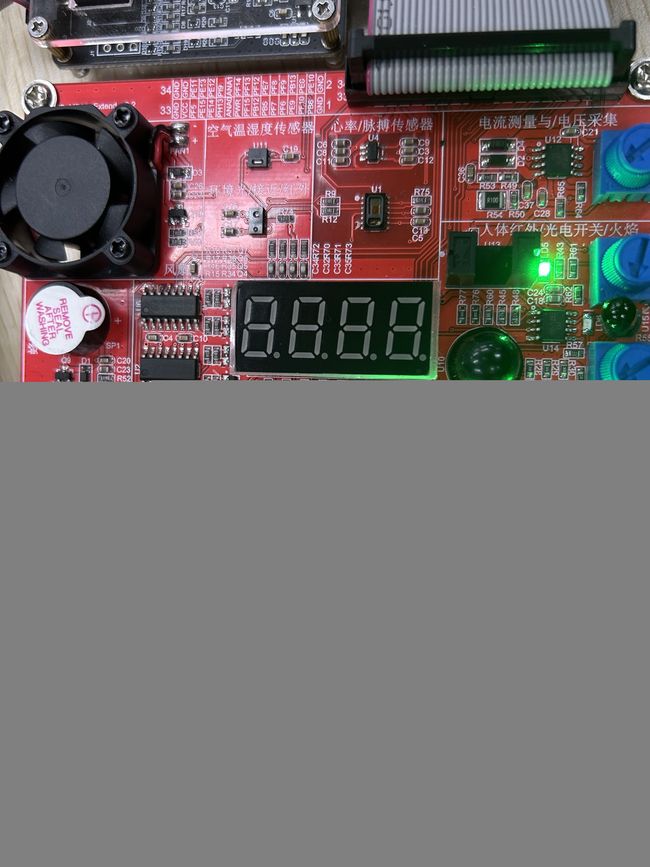作业:通过字符设备驱动分步注册方式编写LED驱动,完成设备文件和设备的绑定
驱动程序:myled.c
#include
#include
#include
#include
#include
#include
#include
#include
#include "head.h"
char kbuf[128] = "";
struct cdev *cdev;
unsigned int major = 0;
unsigned int minor = 0;
dev_t devno;
module_param(major, uint, 0664); //方便命令行传递major的值
struct class *cls;
struct device *dev;
gpio_t *vir_led1;
gpio_t *vir_led2;
gpio_t *vir_led3;
unsigned int *vir_rcc;
//封装操作方法
int mycdev_open(struct inode *inode, struct file *file)
{
int min = MINOR(inode->i_rdev); //根据打开的文件对应的设备号获取次设备号
file->private_data = (void *)min;
printk("%s:%s:%d\n", __FILE__, __func__, __LINE__);
return 0;
}
long mycdev_ioctl(struct file *file, unsigned int cmd, unsigned long arg)
{
int min = (int)file->private_data; //传递次设备号
//设备文件和设备的绑定,根据次设备号决定打开的设备文件,根据打开的设备文件,控制相应的设备
switch (min)
{
case 0: //控制LED1
switch (cmd)
{
case LED_ON: //开灯
vir_led1->ODR |= (0x1 << 10);
break;
case LED_OFF: //关灯
vir_led1->ODR &= (~(0x1 << 10));
break;
}
break;
case 1: //控制LED2
switch (cmd)
{
case LED_ON: //开灯
vir_led2->ODR |= (0x1 << 10);
break;
case LED_OFF: //关灯
vir_led2->ODR &= (~(0x1 << 10));
break;
}
break;
case 2: //控制LED3
switch (cmd)
{
case LED_ON: //开灯
vir_led3->ODR |= (0x1 << 8);
break;
case LED_OFF: //关灯
vir_led3->ODR &= (~(0x1 << 8));
break;
}
break;
}
return 0;
}
ssize_t mycdev_read(struct file *file, char *ubuf, size_t size, loff_t *lof)
{
return 0;
}
ssize_t mycdev_write(struct file *file, const char *ubuf, size_t size, loff_t *lof)
{
return 0;
}
int mycdev_close(struct inode *inode, struct file *file)
{
printk("%s:%s:%d\n", __FILE__, __func__, __LINE__);
return 0;
}
//定义一个操作方法结构体对象并初始化
struct file_operations fops = {
.open = mycdev_open,
.unlocked_ioctl = mycdev_ioctl,
.read = mycdev_read,
.write = mycdev_write,
.release = mycdev_close,
};
int all_led_init(void)
{
//进行相关寄存器的内存映射
//GPIOE组寄存器内存映射
vir_led1 = ioremap(PHY_LED1_ADDR, sizeof(gpio_t));
if (vir_led1 == NULL)
{
printk("物理内存映射失败%d\n", __LINE__);
return -EFAULT;
}
vir_led2 = ioremap(PHY_LED2_ADDR, sizeof(gpio_t));
if (vir_led2 == NULL)
{
printk("物理内存映射失败%d\n", __LINE__);
return -EFAULT;
}
vir_led3 = vir_led1;
vir_rcc = ioremap(PHY_RCC_ADDR, 4);
if (vir_rcc == NULL)
{
printk("物理内存映射失败%d\n", __LINE__);
return -EFAULT;
}
printk("寄存器内存映射成功\n");
//硬件寄存器的初始化
//RCC使能
(*vir_rcc) |= (0x3 << 4); //GPIOE(PE10 PE8)使能 GPIOF(PF10)使能
//设置PE10为输出模式 --> LED1
(vir_led1->MODER) &= (~(0x3 << 20));
(vir_led1->MODER) |= (0x1 << 20);
//设置PF10为输出模式 --> LED2
(vir_led2->MODER) &= (~(0x3 << 20));
(vir_led2->MODER) |= (0x1 << 20);
//设置PE8为输出模式 --> LED3
(vir_led3->MODER) &= (~(0x3 << 16));
(vir_led3->MODER) |= (0x1 << 16);
//默认LED1关灯
(vir_led1->ODR) &= (~(0x1 << 10));
//默认LED2关灯
(vir_led2->ODR) &= (~(0x1 << 10));
//默认LED1关灯
(vir_led3->ODR) &= (~(0x1 << 8));
printk("寄存器初始化成功\n");
return 0;
}
static int __init mycdev_init(void)
{
//寄存器内存地址映射以及初始化
all_led_init();
int ret;
//1.为字符设备驱动对象申请空间
cdev = cdev_alloc();
if (cdev == NULL)
{
printk("申请字符设备驱动对象空间失败\n");
ret = -EFAULT;
goto out1;
}
printk("申请字符设备驱动对象空间成功\n");
//2.初始化字符设备驱动对象
cdev_init(cdev, &fops);
printk("初始化字符设备驱动对象成功\n");
//3.申请设备号
if (major > 0) //静态指定设备号
{
ret = register_chrdev_region(MKDEV(major, minor), 3, "myled");
if (ret)
{
printk("静态申请设备号失败\n");
goto out2;
}
}
else if (major == 0)
{ //动态申请设备号
ret = alloc_chrdev_region(&devno, minor, 3, "myled");
if (ret)
{
printk("动态申请设备号失败\n");
goto out2;
}
major = MAJOR(devno); //获取主设备号
minor = MINOR(devno); //获取次设备号
}
printk("申请设备号成功 major= %d\n", major);
//4.注册字符设备驱动对象
ret = cdev_add(cdev, MKDEV(major, minor), 3);
if (ret)
{
printk("注册字符设备驱动对象失败\n");
goto out3;
}
printk("注册字符设备驱动对象成功\n");
//向上提交目录信息
cls = class_create(THIS_MODULE, "myled");
if (IS_ERR(cls))
{
printk("向上提交目录失败\n");
ret = -PTR_ERR(cls);
goto out4;
}
printk("向上提交目录成功\n");
//向上提交设备节点信息
int i;
for (i = 0; i < 3; i++)
{
dev = device_create(cls, NULL, MKDEV(major, i), NULL, "myled%d", i);
if (IS_ERR(dev))
{
printk("向上提交设备节点信息失败\n");
ret = -PTR_ERR(dev);
goto out5;
}
}
printk("向上提交设备信息成功\n");
return 0;
out5:
//释放前一次提交成功的设备信息
for (--i; i >= 0; i--)
{
device_destroy(cls, MKDEV(major, i));
}
class_destroy(cls); //释放目录
out4:
//注销字符设备驱动对象
cdev_del(cdev);
out3:
//释放设备号
unregister_chrdev_region(MKDEV(major, minor), 3);
out2:
//释放设备驱动对象空间
kfree(cdev);
out1:
return ret;
}
static void __exit mycdev_exit(void)
{
int i;
//释放设备节点信息
for (i = 0; i < 0; i++)
{
device_destroy(cls, MKDEV(major, i));
}
//销毁目录
class_destroy(cls);
//注销字符设备驱动对象
cdev_del(cdev);
//释放设备号
unregister_chrdev_region(MKDEV(major, minor), 3);
//释放设备驱动对象空间
kfree(cdev);
}
module_init(mycdev_init);
module_exit(mycdev_exit);
MODULE_LICENSE("GPL");
应用程序:test.c
#include
#include
#include
#include
#include
#include
#include
#include
#include "head.h"
int main()
{
int a, b;
char buf[128] = "";
int fd1, fd2, fd3;
while (1)
{
printf("请输入要控制的灯:0(LED1) 1(LED2) 2(LED3) >");
scanf("%d", &a);
switch (a)
{
case 0:
fd1 = open("/dev/myled0", O_RDWR);
if (fd1 < 0)
{
printf("设备文件打开失败\n");
exit(-1);
}
printf("请输入对LED的控制命令:0(关灯) 1(开灯) >");
scanf("%d", &b);
switch (b)
{
case 0:
ioctl(fd1, LED_OFF); //关灯
close(fd1);
break;
case 1:
ioctl(fd1, LED_ON); //开灯
close(fd1);
break;
}
break;
case 1:
fd2 = open("/dev/myled1", O_RDWR);
if (fd2 < 0)
{
printf("设备文件打开失败\n");
exit(-1);
}
printf("请输入对LED的控制命令:0(关灯) 1(开灯) >");
scanf("%d", &b);
switch (b)
{
case 0:
ioctl(fd2, LED_OFF); //关灯
close(fd2);
break;
case 1:
ioctl(fd2, LED_ON); //开灯
close(fd2);
break;
}
break;
case 2:
fd3 = open("/dev/myled2", O_RDWR);
if (fd3 < 0)
{
printf("设备文件打开失败\n");
exit(-1);
}
printf("请输入对LED的控制命令:0(关灯) 1(开灯) >");
scanf("%d", &b);
switch (b)
{
case 0:
ioctl(fd3, LED_OFF); //关灯
close(fd3);
break;
case 1:
ioctl(fd3, LED_ON); //开灯
close(fd3);
break;
}
break;
}
}
close(fd1);
close(fd2);
close(fd3);
return 0;
}
头文件:head.h
#ifndef __HEAD_H__
#define __HEAD_H__
typedef struct{
unsigned int MODER;
unsigned int OTYPER;
unsigned int OSPEEDR;
unsigned int PUPDR;
unsigned int IDR;
unsigned int ODR;
}gpio_t;
#define PHY_LED1_ADDR 0x50006000
#define PHY_LED2_ADDR 0x50007000
#define PHY_LED3_ADDR 0x50006000
#define PHY_RCC_ADDR 0x50000A28
//构建LED开关的功能码,不添加ioctl第三个参数
#define LED_ON _IO('l', 1)
#define LED_OFF _IO('l', 0)
#endif



